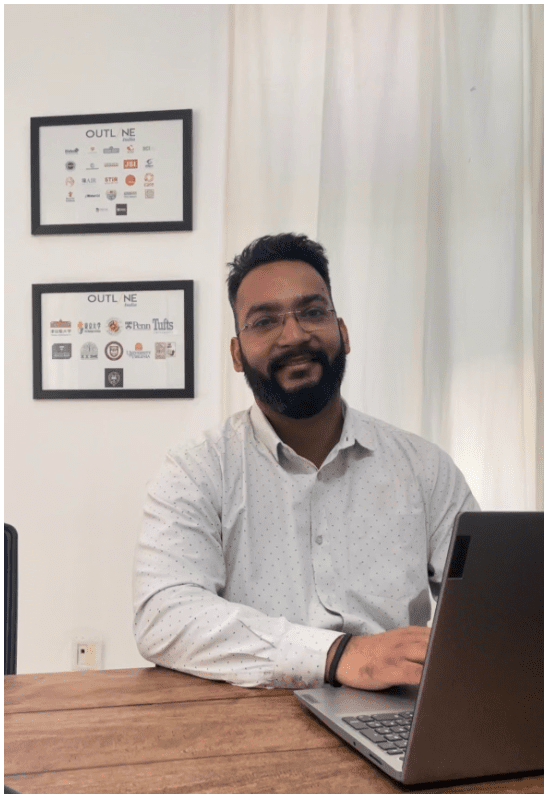How Outline India assessed 15,000 respondents using SurveyCTO’s CATI features


Meet Outline India
Outline India achieves social impact through the power of high-quality data. For over 10 years, they have provided research services and monitoring & evaluation (M&E) consulting to empower clients to make data-driven decisions that change lives. Partnering with think tanks, policymakers, CSR agents, philanthropists and the Government, they act as catalysts for their work through their services.
Outline India is active in all 29 states and over 68,000 villages across India, with a track record of touching over 50 million lives since their founding in 2012. Their projects have spanned a wide range of focus areas, including education, political engagement, financial literacy, healthcare, sexual & reproductive health, child rights, and more.
Offices: India
Sector: Research–Social Impact and Consulting
Use case: Survey firms
Employees: 50-100
Features used: CATI features
Website: https://www.outlineindia.com/
The Challenge: Delivering a high-volume survey during the COVID-19 crisis
Like many research firms and data collectors, Outline India experienced disruptions and changes to their regular data collection practices during the COVID-19 pandemic. One result of the pandemic on data collection was an increase in phone surveys, or computer-assisted telephone interviews (CATI), in place of face-to-face computer-assisted personal interviewing (CAPI). Outline India’s standard phone survey setup involved their field workers sharing phone numbers of respondents with each other, and using a hard copy of the survey instrument with the field team while they conducted interviews over the phone.
However, this setup met its match on a project conducted in December 2022. Outline India was running an endline assessment in the two districts of Madhya Pradesh, India using phone surveys. They were measuring the value of electricity and consumers’ willingness to pay for it, as well as the electric company’s revenue. The first phase of this study had been carried out during the beginning of the pandemic, when financial stressors on electricity distribution companies were very high in India.
Initially, Outline India understood the survey to be for 3,000 respondents, but when the project was put in place, they received a list of 15,000 respondents! This was five times higher than the required sample size, and had been done intentionally due to the higher attrition rate that is common in phone surveys. Since this was an endline survey, Outline India needed to verify the original 3,000 survey respondents that were previously a part of the same study, in addition to incorporating the new respondents.
With this huge increase in respondent volume and project scope, Outline India knew they needed to adhere to their values of cutting-edge survey tools and methodologies in order to achieve their goals.
The Solution: SurveyCTO’s case management and CATI features
Outline India was pleased to discover that SurveyCTO had implemented a set of CATI features during the pandemic, and that they could work seamlessly with case management, SurveyCTO’s feature for entity-based data collection. They also knew SurveyCTO had other features that would help them with this survey.
Altogether, Outline India used four strategies to execute on this project:
- Case management automated distributing the list of respondents and their phone numbers by allowing Outline India to assign respondents to an enumerator.
- The phone-call field plug-in allowed enumerators to make calls directly from SurveyCTO Collect on their mobile devices.
- The pulldata() function was used to display the name and age of each respondent to enumerators.
SurveyCTO’s data visualization features were used to give real-time updates to field teams as data collection progressed.
The Results: A successful survey of 15,000 respondents
With the right features in place, Outline India met the challenge of the unexpected increase in survey volume, creating a streamlined data flow and real-time monitoring system. The client was satisfied with the results and Outline India was thrilled to be able to deliver robust data quality despite the higher number of respondents.
In particular, Outline India notes that using SurveyCTO created the following benefits:
- Using a CAPI-first platform like SurveyCTO minimized mistakes and reduced bias.
- SurveyCTO’s features for tracking and recording the status of each call in a phone survey (call dropped, not available, busy, etc.) simplified project management and reporting.
- Being able to build a real-time data monitoring system helped not only with quality checks, but in visualizing it for stakeholders during collection, allowing for the project to be adjusted as needed per the client’s request.

